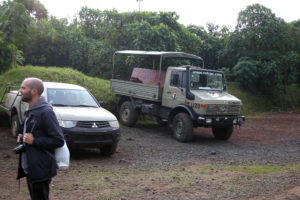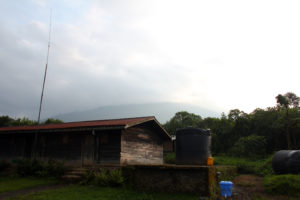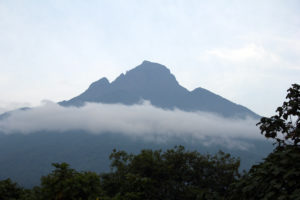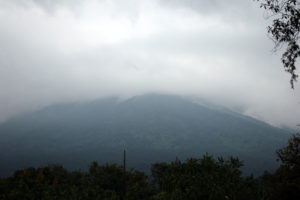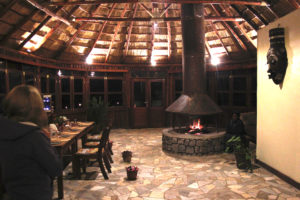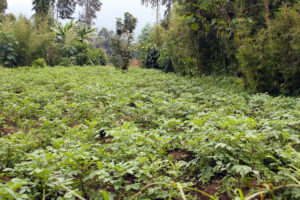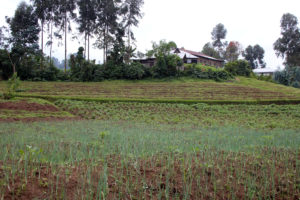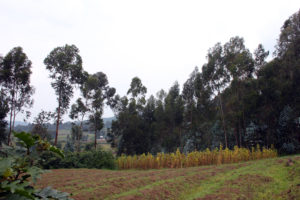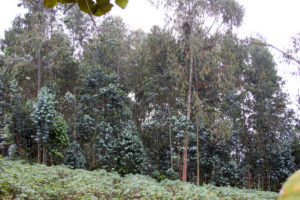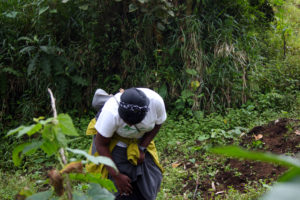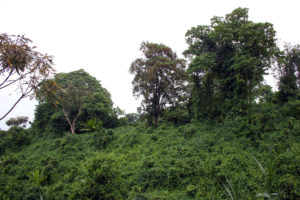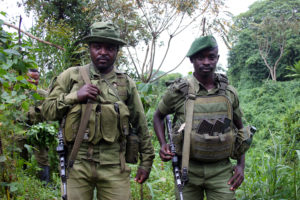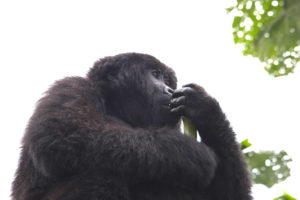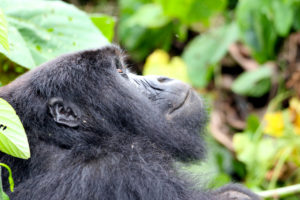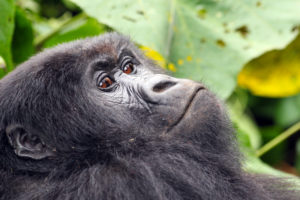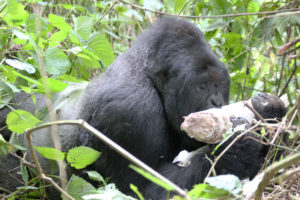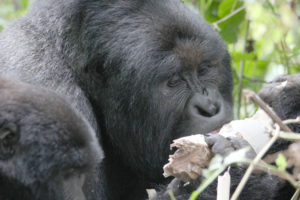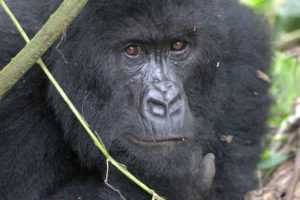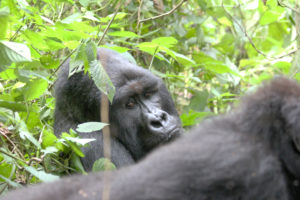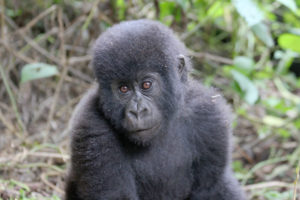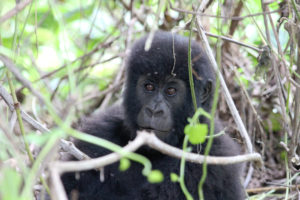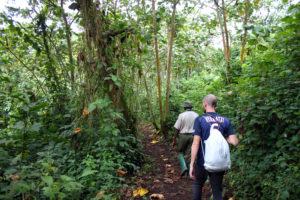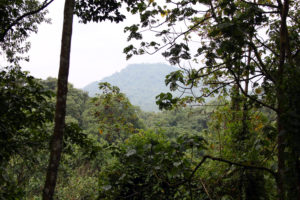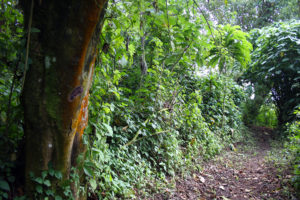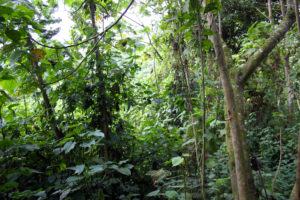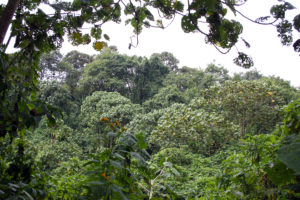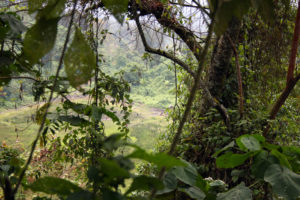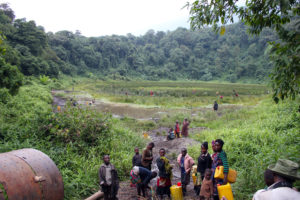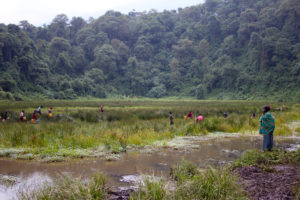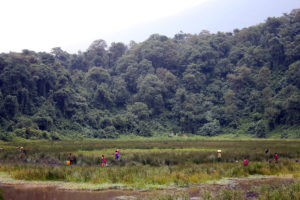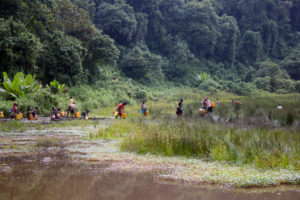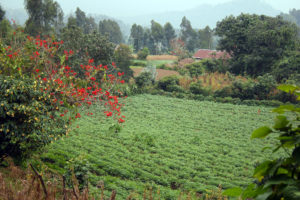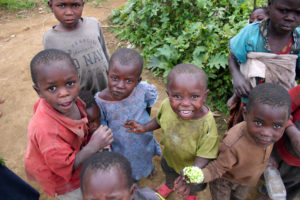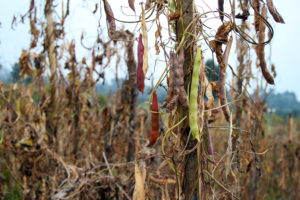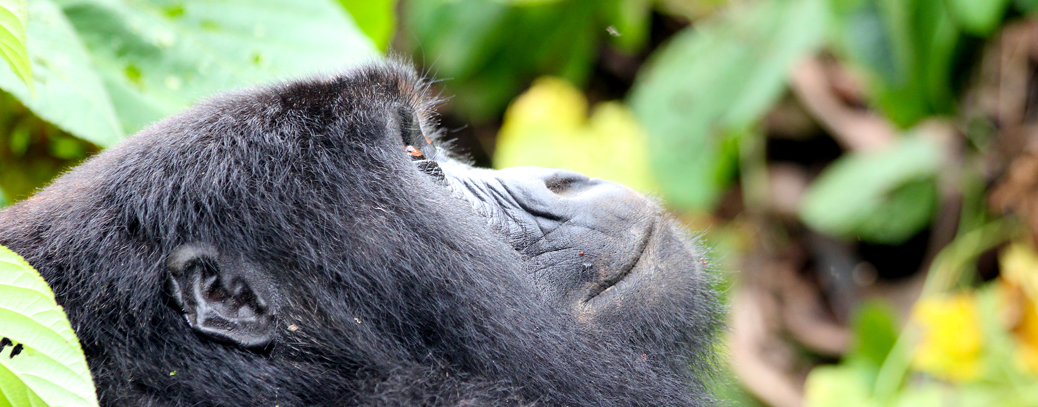
The fight for nature in Congo
The driver whose name is Elias, was supposed to pick me up at 09:00 o’clock in the morning. When it became nine sharp, he wasn’t there, however. I started to get a bit nervous, as we Swiss usually do, when an agreed upon time isn’t met by the minute.
It was a long drive, that I had ahead of me. First, we would move out of Kigali to the western part of the small African country of Rwanda. There is a great lake called Kivu, which is split from north to south by a borderline and thus shared between Rwanda, and it’s large, western neighbour: the Democratic Republic of Congo, or short DRC.
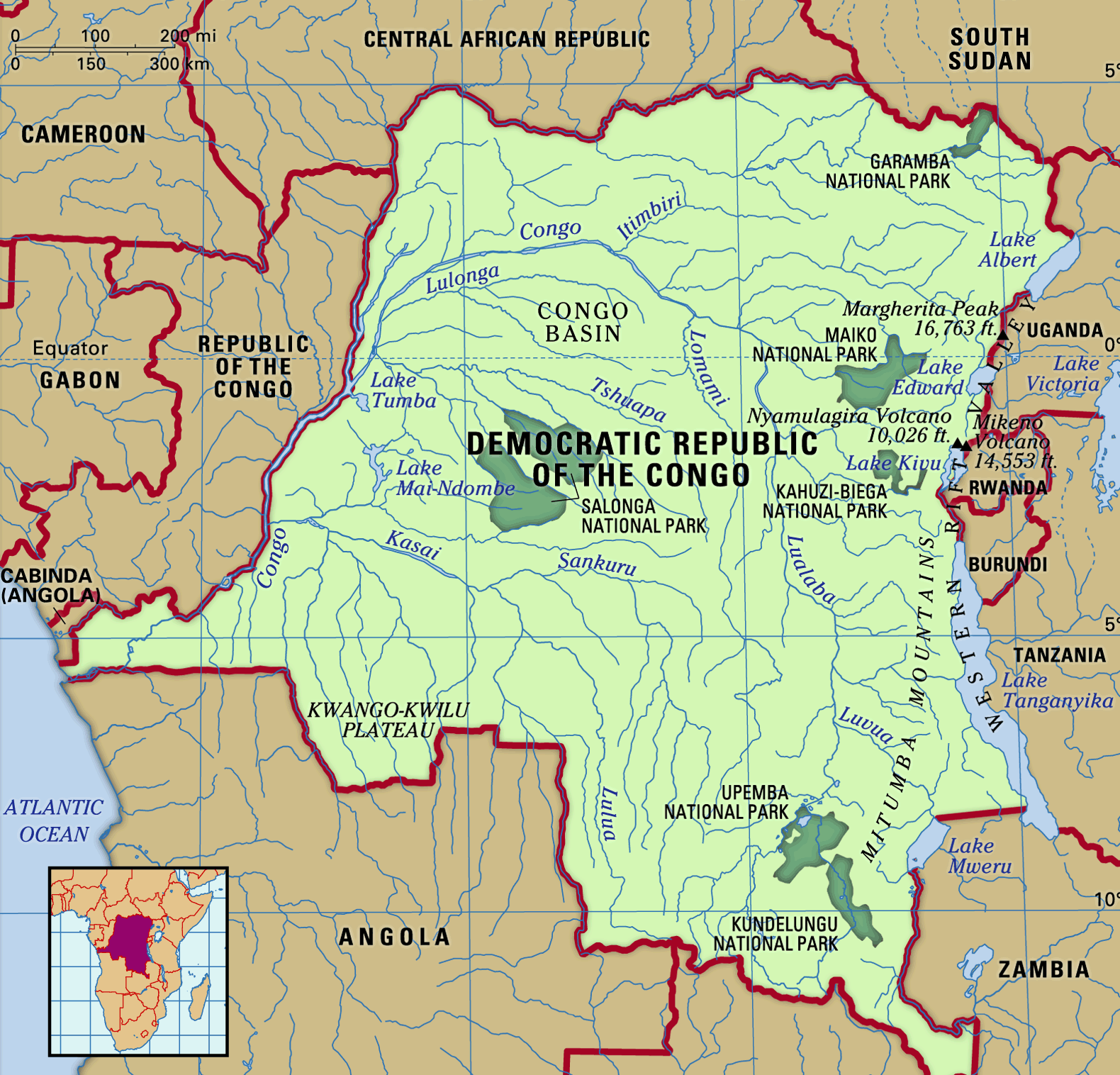
This huge African country was my final destination today. When Elias arrived with a little delay of about 10 minutes, the long ride could begin. As I had mentioned in my previous entry about Rwanda, this country truly is the land of a thousand hills! And the bad news is, that there are no tunnels. Or, not that I had seen any, haha.
Therefore, the roads wiggle alongside the many, many hills, sometimes crossing them and sometimes just contouring them. Either of the two options do include enough curves, haha.
The landscape that I get to see is nonetheless amazing! The country is dyed in a lush green. I see pastures and fields of vegetables everywhere, not to mention thousands of trees. Among them, interestingly enough, is a species, that somehow doesn’t seem to fit in the picture. Its leaves seem to have a white touch seen from afar. They dot the forests on the hills everywhere.
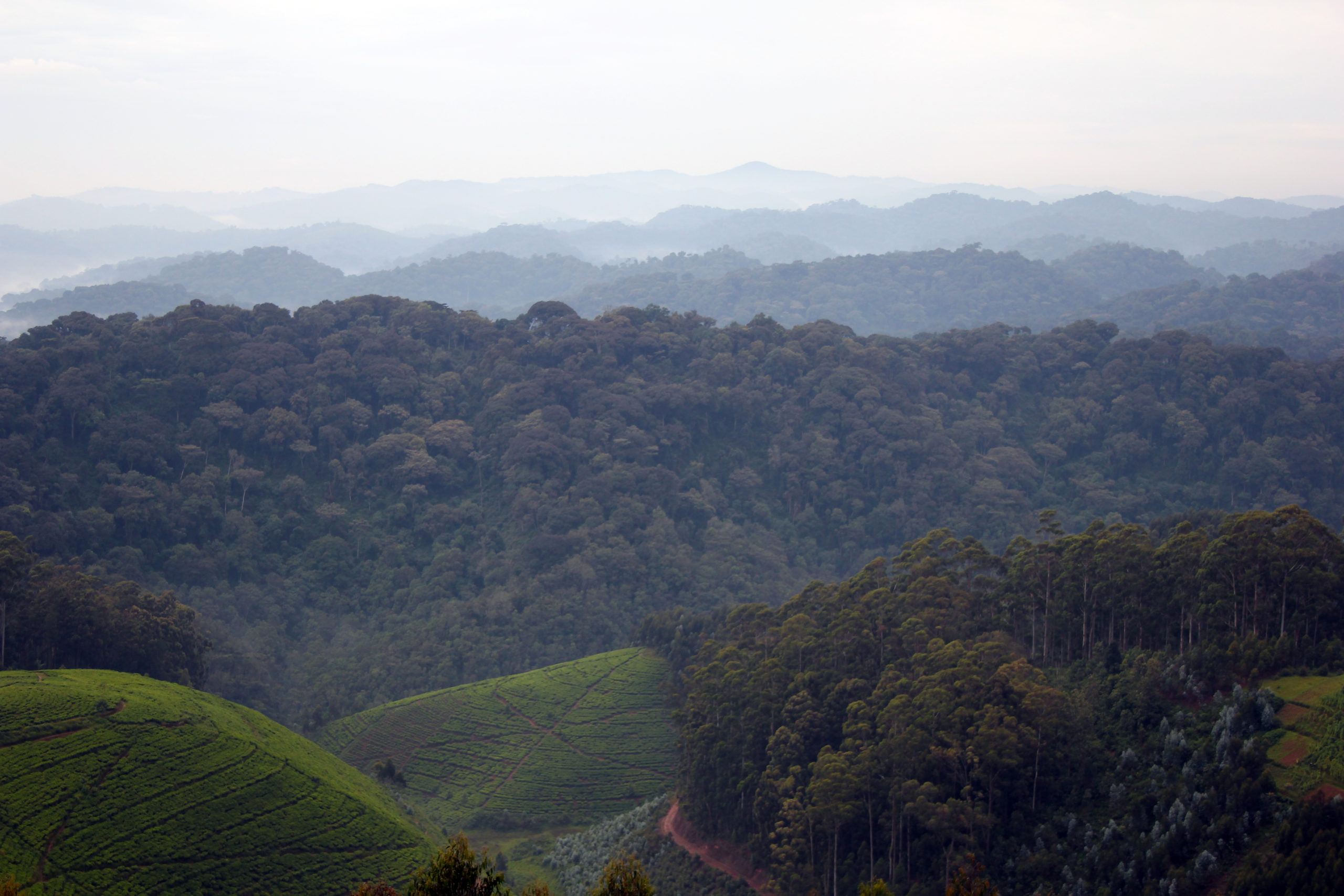
I want to know what kind of trees these are and therefore ask Elias. He replies, that they are eucalyptus! That sort is not endemic here, but was imported from Asia. Now it has spread all over the country. In front of many of the green forests on the hills that we pass, cows are grazing on small, steep pastures. Switzerland truly comes to my memory, when I see such scenes. Ever better can I understand the term “Switzerland of Africa”.
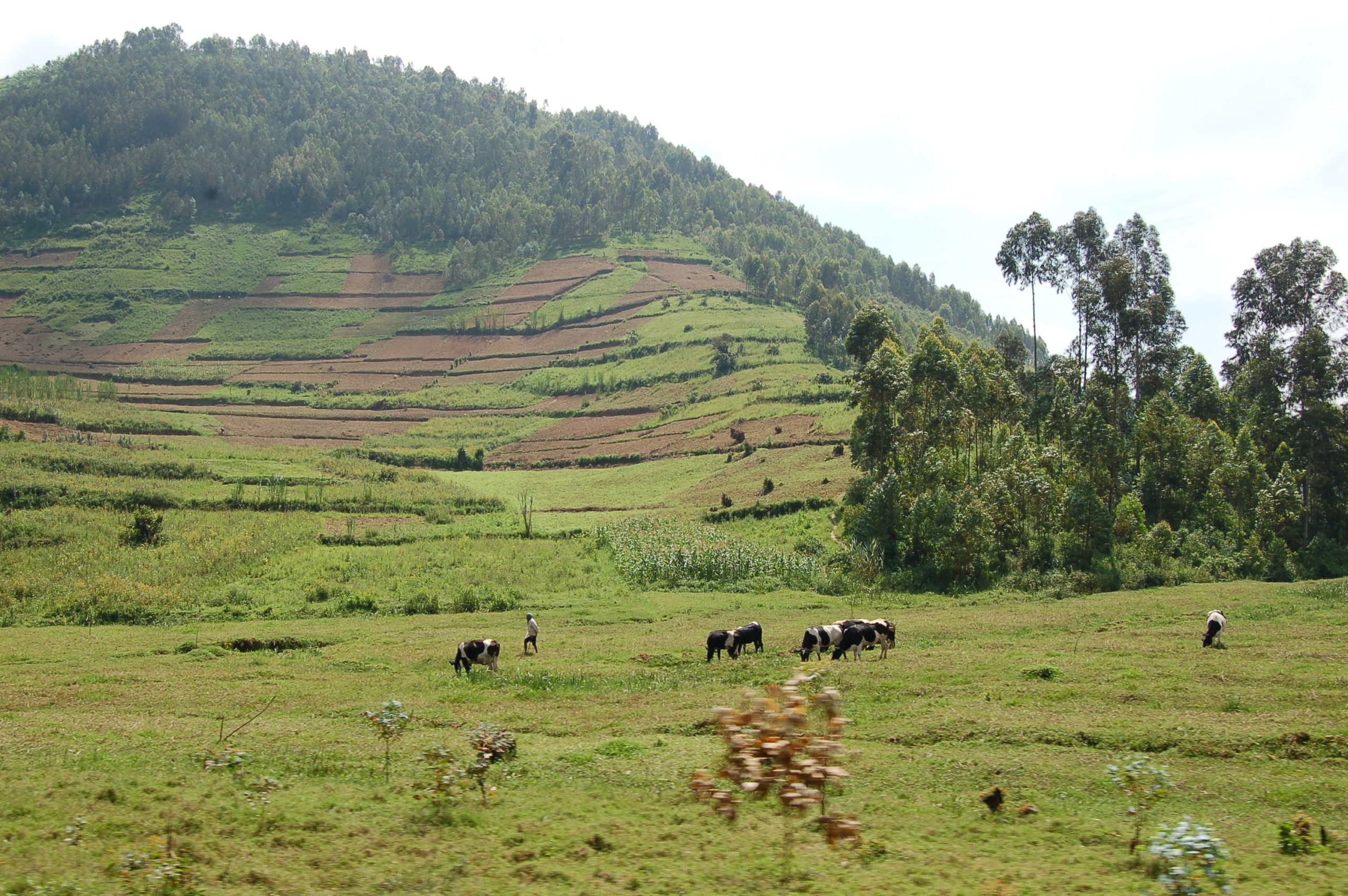
On the road we also pass a lot of people who seem to be transporting something. Some are walking, others have bicycles. On their shoulders they carry goods along the road to their villages or markets in other places. Seen from the car, it looks like a long line of ants, conveying things to their formicary.
Then, we arrive in Gisenyi, the last town on the Rwandan side of the border. Elias accompanies me through the emigration and customs process to a large building on the Congolese side. There we bid farewell. I am now standing in a shared office, where several tour operators work.
Here I get to meet Obed, the owner of Kumbukumbu tours. I had had frequent e-mail contact with him over the past weeks, in order to customize and prepare my tour. He is a very nice and sympathetic young man. With him is Steva, who works as a tour guide for him. I would get to know her closer in the next few days, for she would be on for the ride.
Likewise, present is Thomas, a young French national, who currently works for an NGO in the DRC. This trip would be his holiday.
And for me, it was another opportunity to practice my French by the way. But Steva, Thomas and I are not the only ones who want to get into Congo. There is a group of six people, judging by their language, from Eastern Europe. From Russia, to be exactly.
While everybody is set and ready to go, they seem to have a discussion with one of the travel agents.
After a few minutes, we find out, what this argument is about. Obviously, they would have been a larger group, but a few persons did not show up. Be that as it may, they did not cancel the tour correctly and now the operator wants them to pay the full amount, which means including the costs for the persons, who did not show up.
I understand their dilemma and furthermore it is very hard for them to get the point across, since only one or two of them speak a bit of English and no other language except for Russian that is.
After an hour, and after being admitted into the country by the immigration, Steva, Thomas and I head out into Goma – the town on the other side of Rubavu, in order to get something to eat. Luckily enough, my French companion carries Congolese currency already, for nobody seems to be wanting my Rwandan Francs here, hehe.
We buy a bit of cheese, some bread and some bottles of water. This would be our lunch for today. When we got back, we started to load our luggage onto a large, four wheeled truck, which was going to drive us to the Virunga National Park. The Kibumba tented camp up in the hills of the park was our final destination. The first time I had read about Virunga, was more than four years ago in a National Geographic issue.
It is Africa’s oldest national park and inhabits some of the last mountain gorillas in the world.
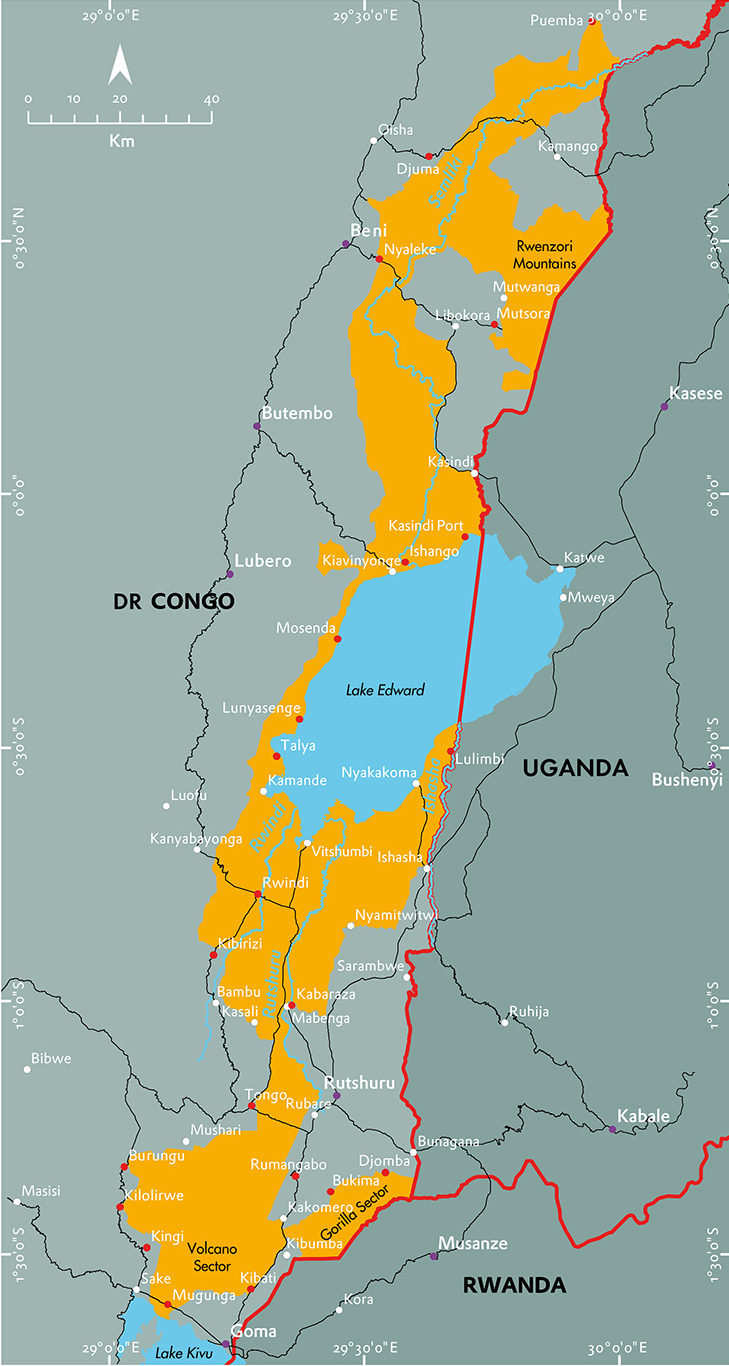
The park had been having an incredibly difficult past, trying to navigate between rebel groups, who fought and still fight the government and for natural resources in the area. At the same time, the administration has to handle the ever-growing problem of population growth in the area, for more people need more space and therefore look out to the large area of the park to settle and grow crops.
Moreover, there are large companies interested in fossil energy carriers like oil, which is being assumed to exist inside the park.
Add an unstable and corrupt government into the mix and the challenge is almost insurmountable.
But amidst all these substantial threats, the brave rangers of the park, led by their Belgian director Emmanuel de Merode, have managed to keep the area relatively save and reduce poaching and armed conflict inside the park to a minimum. The park also provides one of the last safe havens on earth for the mountain gorilla. Be that as it may, the danger is still present. Every now and then, rangers are being attacked and murdered, gorillas and other animals inside the park being poached.
More information on the Virunga National Park:
https://virunga.org/ (official website)
https://en.wikipedia.org/wiki/Virunga_National_Park (wikipedia entry on the park)
I highly recommend to see the award winning documentary on the park on Netflix as well: https://www.netflix.com/title/80009431
I was very eager to see that environment. When we finished loading our baggage onto the vehicle, there were still no Russians, for they were yet inside the office, negotiating with the tour operator. After one more hour, they finally showed up, and we were ready to go.
Judging by the clothes they wore, they had no idea what they were getting into, I thought.
Three women and three men. Couples it seemed to me. While the females were sporting all sorts of leopard and other animal fur clothing, the men wore everyday stuff. One of them stuck out though: he was in functional wear, from head to toe.
Also, he seemed to be the leader of their group, for he was the one who always negotiated and in one instance that I witnessed, asked his fellow travellers, one by one, whether they were willing to pay the outstanding balance. Interestingly, I had understood the Russian word for paying, since it is very similar to the Serbian one. This was due to the fact that I had been working in Bosnia.
When we finally started to make our way through the busy streets of Goma, I started to talk to the Russian. Actually, a Russian from Lithuania, he stated. As our conversation evolved, it became very clear that this man had been in many different places all over the world already.
Goma, the first Congolese town that we were passing, is a very busy place. Instantly, I notice the difference to Rwanda. Everything is much more dirty here. Lots of rubbish on the streets, trash being burned in alleys and an unpleasant odour in the air. The Russians want to film everything with their devices, but many of the involuntary protagonists get upset.
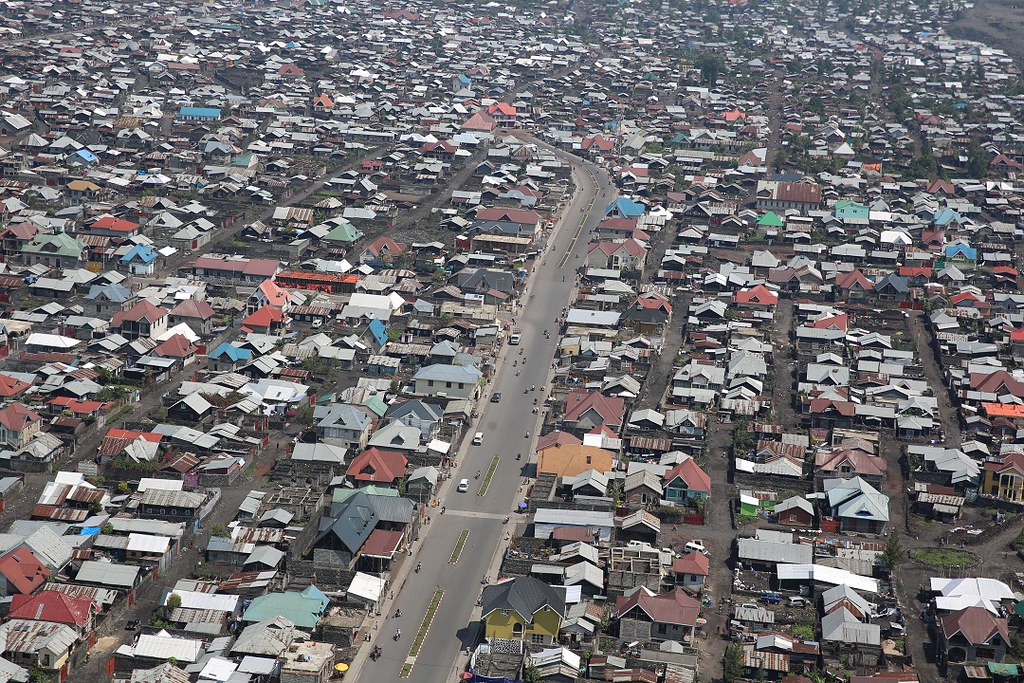
This goes on until the driver of the truck gets out and tells them to stop filming. As we leave Goma, the roads turn into dirt. No asphalt anymore. We catch up with a Tunisian UN truck, loaded with soldiers. Then we see an Indian one and many others.
In the democratic republic of Congo, the largest UN mission in the world is taking place. More than 17’000 foreign UN soldiers from all over the world are stationed here, in order to provide a bit of stability and sometimes even enforce it.
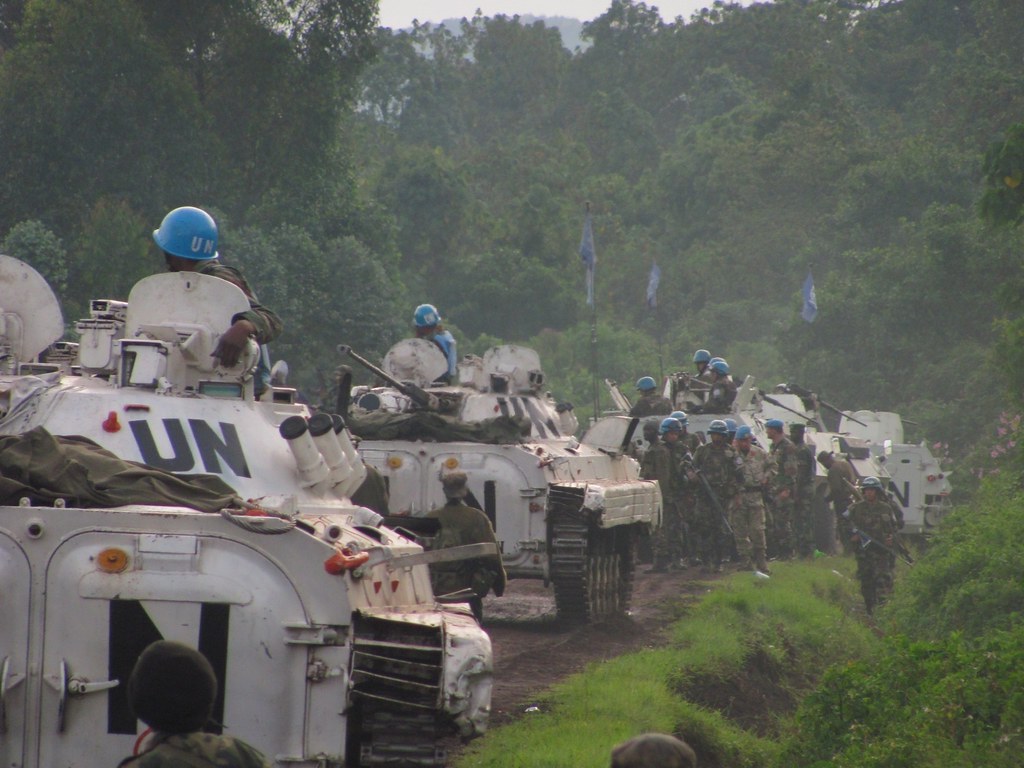
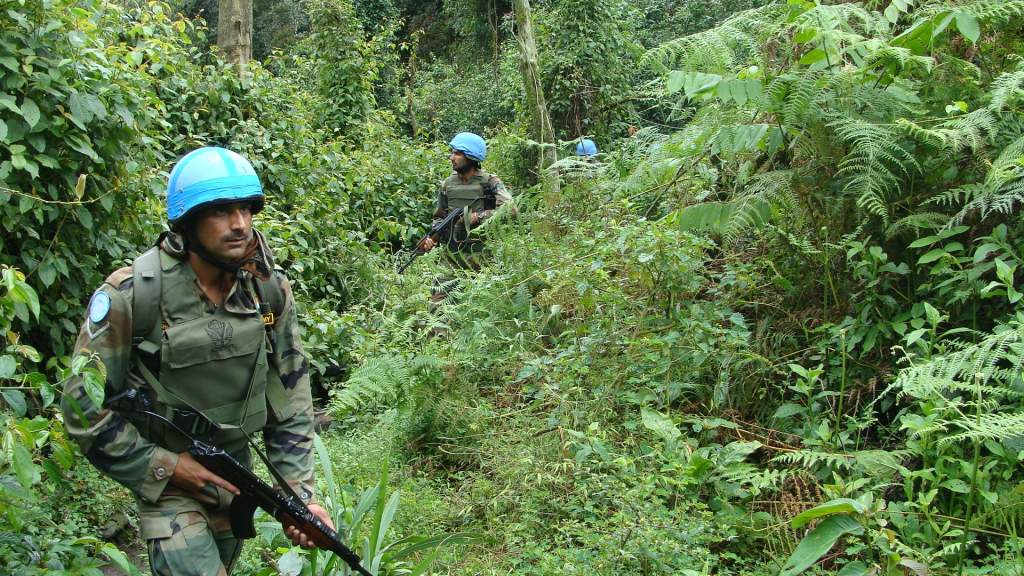
These troops are located predominantly in the eastern part of the country, where the situation is the most volatile and unstable. As I had mentioned before, the region is under immense pressure.
As many as 50 different rebel groups are fighting against the government and each other for control over the area and with it, the natural resources.
There are many mines there. Tin, copper, gold, uranium and coltan are being fought over. However, the rebel groups and the Congolese government are not the only players. There are Rwandan and Ugandan influences as well, not to mention the interests of foreign mining companies. To sum up, all of these factors do not exactly contribute to a stable and prospering environment.
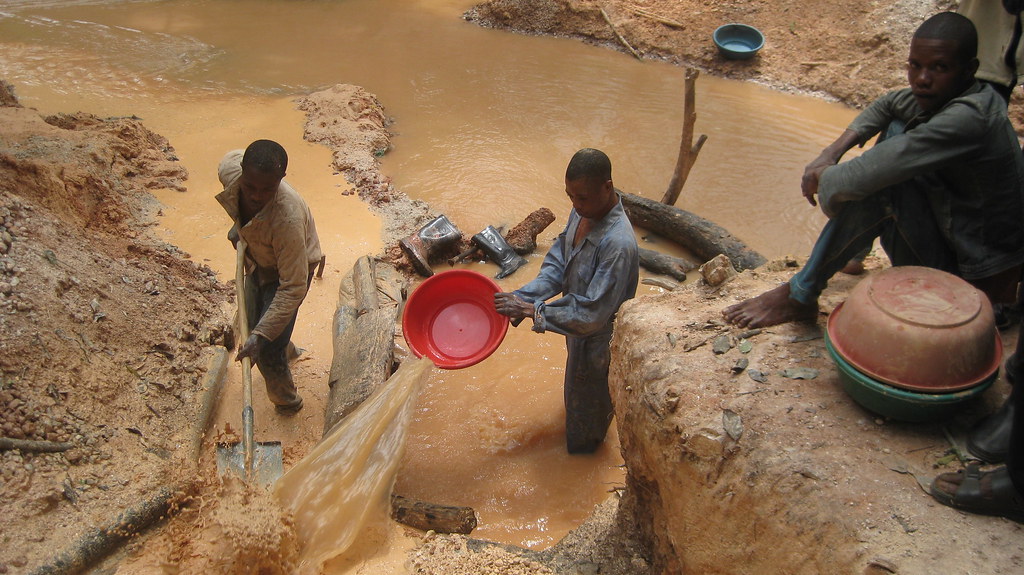
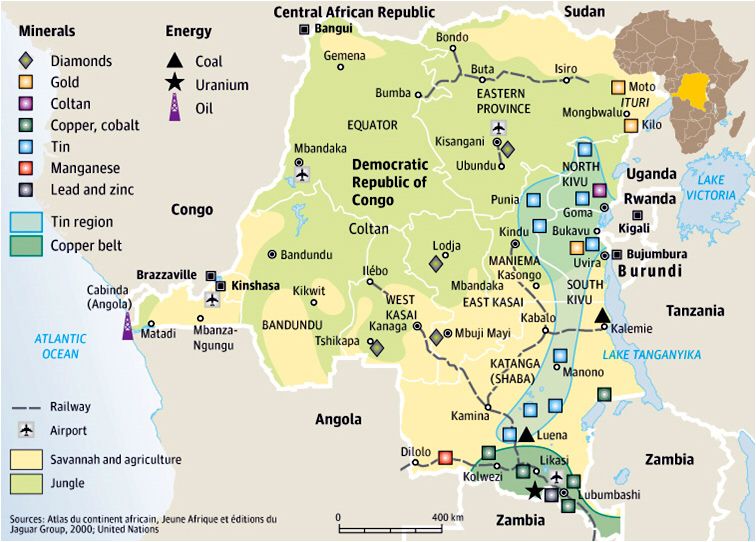
More information on the DRC: https://en.wikipedia.org/wiki/Democratic_Republic_of_the_Congo (wikipedia entry)
Nevertheless, the beauty of the regions’ nature is astonishing. Many kilometres outside Goma, we stop for a sanitary checkpoint. Here, everybody needs to get out, wash and disinfect their hands, and have their body temperature checked. To all the problems I have been speaking about, one needs to add a disease called the Ebola virus, which has been grazing in the region for years.
Shortly after, the truck stops once more, and we are met by a group of the Virunga rangers, heavily armed, who would escort us to the camp.
Not only do the six of them carry AK assault rifles, but also a light machine gun.
Tourists had been abducted in the park before, rangers who protected them, being murdered. The drive continues, and we get ever closer to the hills and the volcanoes. The region hosts several of them.
The roads become ever smaller and soon, we find ourselves in the mountains, passing small villages. The children wave and shout at us, while we drive by and one word always sticks out: Musungu. It seems to be a Bantu language term used to refer to white people.
The kids obviously enjoy our presence with big smiles on their faces. A warm welcome, hehe.
The driver parks the truck close to the barracks, where the rangers live, while they’re on duty. They are much organized like a military unit, and in fact receive their training from the Belgian Army. There are also trackers among them.
Staff from the tented camp welcomes us and prepares to carry our luggage up on top of the hill, where the camp is located. When I look at the Russian’s luggage, I very much pity the poor porters. Not only did the Eastern Europeans bring along unpractical clothes, but also very unpractical containers.
Who brings a suitcase with rolls into the jungle?
Thomas and I brought backpacks and decide to carry them up the hill ourselves, for we don’t want them to be a burden for the porters, who we agreed have enough on their plates already.
The Kibumba tented camp is a very nice, and much more luxurious place than I had expected. There is one large wooden building inside of which the dining room, a bar and a fireplace are located. The bedrooms are in tents, which are arranged to the left and right of a small path that runs behind the main building. When you think of a tent, you usually have the small, portable camping one in mind. Nonetheless, that is not what you find here. See for yourselves:
There is everything one needs and more. There is even a shower inside the tent.
In the evening there is a briefing about the Virunga National Park, its different sectors and of course the gorillas, which we hope to see tomorrow. The information that is being passed on by the camp responsible, are interesting and important, but since he speaks English, French and local languages only, most of the Russians are having trouble following him. The group’s leader has to interpret therefore. We would be split into two groups on the following day. Steva, Thomas and I will be one group, while the six Russians will form the other. Only in small groups are visitors allowed to see the mountain gorillas.
At dinner, I get the chance to get to know better all the Russians and learn their names. Some of them very typical, by the way like Tatjana and Olga. They seem to be travelling the world. It is actually quite hard to communicate with them, for only their leader speaks some English.
Nonetheless, these men and women are funny, and I had made a big mistake to judge them by their clothes and their suitcases only. Well, at least some of them.
But more on that later. I went to bed early that night, because the day had been long and exhausting. When I entered my tent, I felt relieved that one of the Russian women had asked earlier in the evening whether there were snakes living around the camp. The camp guide had told us, that here, up in the mountains, there are no snakes to be found, for it is too high. Obviously they like lower lands and warmer surroundings.
During the night it rains a little. I can hear many, many noises. Some of them originate from insects or birds, others from the wind, and yet others from larger animals. When morning finally came, I was so excited to go out of camp, and search for the gorillas.
After a short breakfast, we are summoned to the holding area, close to the ranger barracks. There, we receive another briefing, but this time entirely about the mountain gorilla. We learn that they live in groups of up to 40 animals.
Rangers stay with them, as often as they can in shifts. First of all, to protect them. Second, to know their location in order to get the visitors there.
In the small hut where the instructions take place, a large family tree of all the gorillas in Virunga’s southern sector is attached to the wall.
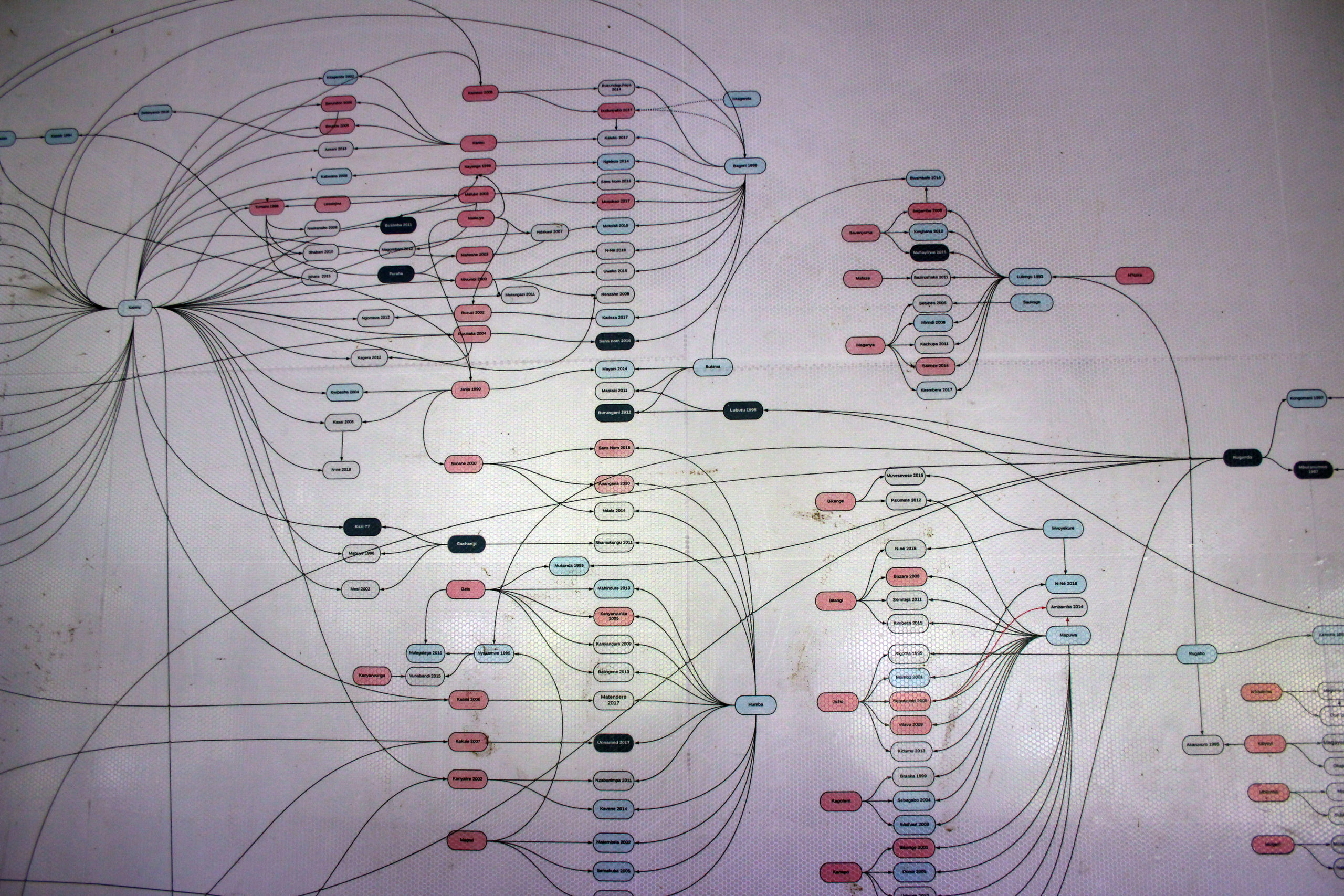
Off we go. With us is John, our guide for today and three other rangers. The group of gorillas that we are supposed to visit is said to not be far away.
It is Bageni’s group. He is a big, 22 year old silver back.
Our way leads us through small farms and fields. I get curious and ask Steva, our guide from Kumbukumbu Tours, whether she knows what kind of vegetables are being grown here. She states, that there are onions, tomatoes, sweet corn, dry beans and others. The soil is obviously quite yielding, for this is a volcanic area.
I can see now, that these fields and the farmers who tend them, often men and women alike, need space. Future generations, who are today present as swarms of kids, who live on these farms, are probably not going to need less, but more space. Consequently, this is endangering the park.
After one hour, we finally leave the fields and little pathways to make our way into the jungle. The vegetation is extremely dense. Plants in all sizes are everywhere. It isn’t like in a European forest, where you usually see 10 metres or further. Here, it is hard to even see what’s coming in three.
We are wearing face masks by now, since we have to protect the gorillas from human diseases.
We are only allowed to get as close as seven metres, they said. But if an animal decided to come closer itself, this wouldn’t pose a problem. However, nobody should ever touch these animals, or any wild animal for that matter.
After having linked up with the group that was watching the gorillas during the night, we continued. We had only been tracking through the thick vegetation for 15 minutes, when our guide told us to stop. And then, suddenly in front of our eyes, or should I say on top of a 3-metre tree, is a gorilla.
She just sits up there and eats some of the leaves, barely taking notice of us. Then comes along another one!
This female just walks past us in front of our feet and in her case too, takes scarcely notice.
I am very amazed and immediately think that these animals are probably very used to human beings around them. Whether that is a good thing or not, I am not sure.
The female gorilla that had just walked past us had a small, small baby with her. It attached itself to it’s mother’s breast.
Our guide John tells us that it is approximately two months old. The baby’s hair somehow reminds me of a rock star’s.
After a few minutes and many photographs we continue in search of the rest of the group. We don’t have to go far indeed, for they are actually right around the corner, in a branchy undergrowth with a few small lightings. There are at least 12 of the mountain gorillas!
Among them a couple of small ones, lots of females and of course the big chief: Bageni himself, the huge silverback gorilla.
The whole scene is simply stunning. Seldom can one get that close to wildlife. Steva, Thomas and I are just there, crouching, looking at them, and taking pictures of them, while they are eating, playing with each other, and giving us the occasional look.
At one instance, Bageni makes some loud noises and quickly moves in our direction. I try not to move and remain in a crouching position, as we are supposed to do, when a gorilla charges. Steva seems somewhat scared and holds on to my arm. Later she asks me whether I wasn’t afraid. Of course, I was, but I tried to hold on to the instructions, the rangers had given to us, I told her.
As John had told us before, we are not allowed to stay longer than one hour with the animals. Therefore, we leave them to themselves and make our way back to the camp. Encountering these mountain gorillas close up was one of the most amazing experiences I ever had.
They are beautiful and often reminded me of us humans. Obviously, we share the same DNA to 98%.
More information about the mountain gorilla:
https://en.wikipedia.org/wiki/Mountain_gorilla (Wikipedia entry)
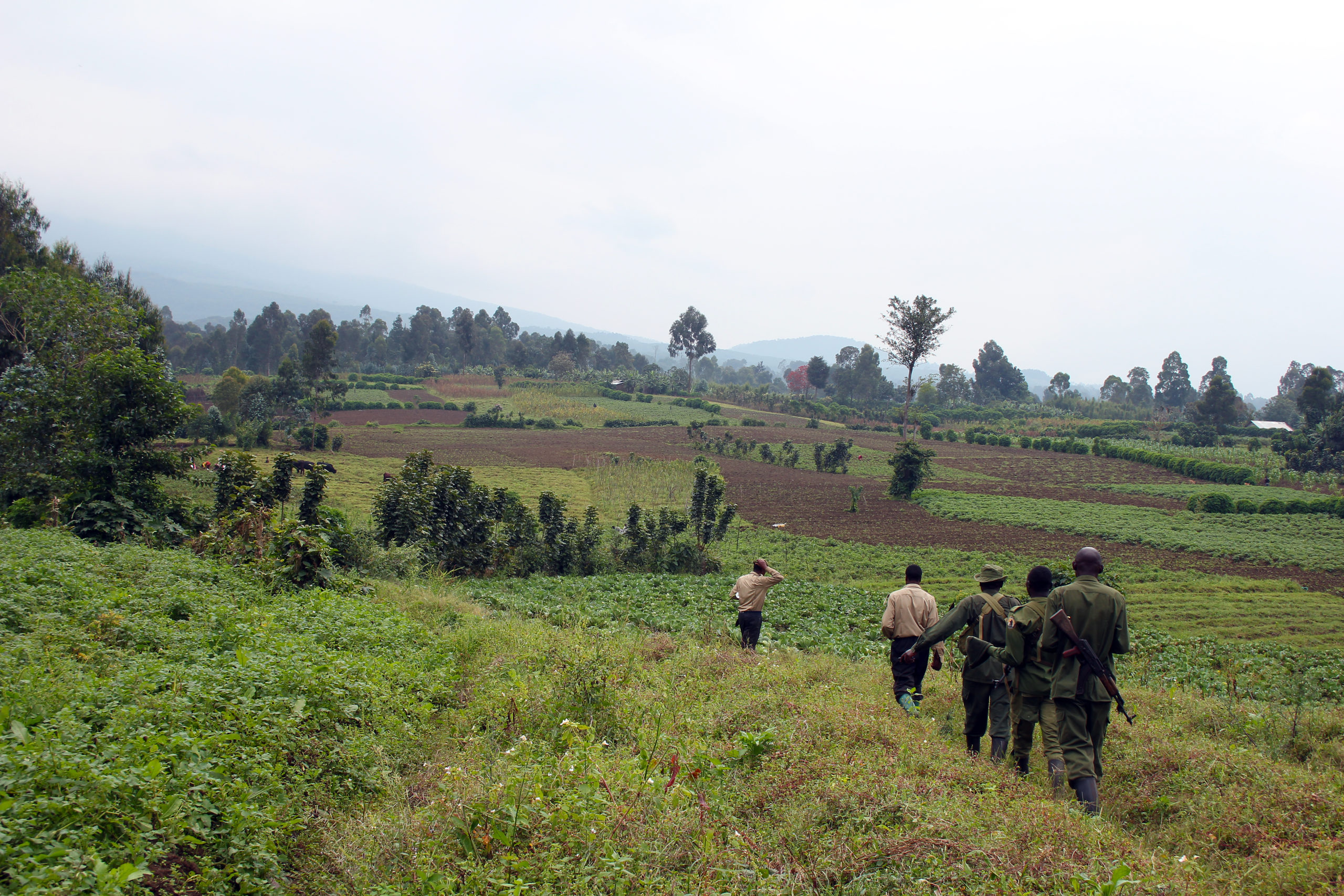
After lunch, the camp responsible asks us whether we want to join him on a stroll through the forest in the surrounding area. Thomas and I decide to go along. None of the Russians wants to come with. We learn something about the trees and the animals here. As we follow a well maintained path, that takes us around the camp, elevation steadily decreases. We seem to be the only ones around.
Through the trees we can see a large clearing, beneath us. There are people there. I wonder whether our path would lead us to that point.
Eventually, we ended up exactly at that spot. The clearing turns out to be a marshy area, crooked with plants. As we get closer, a group of women and children cross our path. They seem to be fascinated by us and ask our guide a lot of questions. Later, one of the ladies skilfully poses for one of my photos, hehe.
We get to see ever more people now, almost all of them carrying some kind of container. Soon it all starts to make sense. They come up to the marshy lake to get water for their homes. Our guide states that this area actually belongs to the park, and that the farmers usually are not allowed in here. But since their water supply, which in fact comes from this marsh is broken at the moment; the rangers let them in to collect the precious good. There are dozens of women, girls and boys helping with the arduous task.
As we leave the place, we are being followed by a group of children. They are extremely curious, and do not speak a single word of English, French or any other language that Thomas and I would be able to understand. Nevertheless, they are very cute, and the group steadily grows.
I am impressed when I see one of the girls, about nine or ten years old carrying her little sibling wrapped with linen on her back. What a responsibility the kids seem to have already.
When we show them our cameras, all of them want to pose for pictures. All except one. The little boy of five or six years starts to cry. When we ask the guide what the boy is afraid of, he mentions that some people here believe that cameras, and with them pictures are able to take away their spirit. Thomas later tells me, that people in Congo often believe in many mystical things. We leave the place and go back to the camp.
In the evening, after dinner we are able to see a red gleam far away in the night.
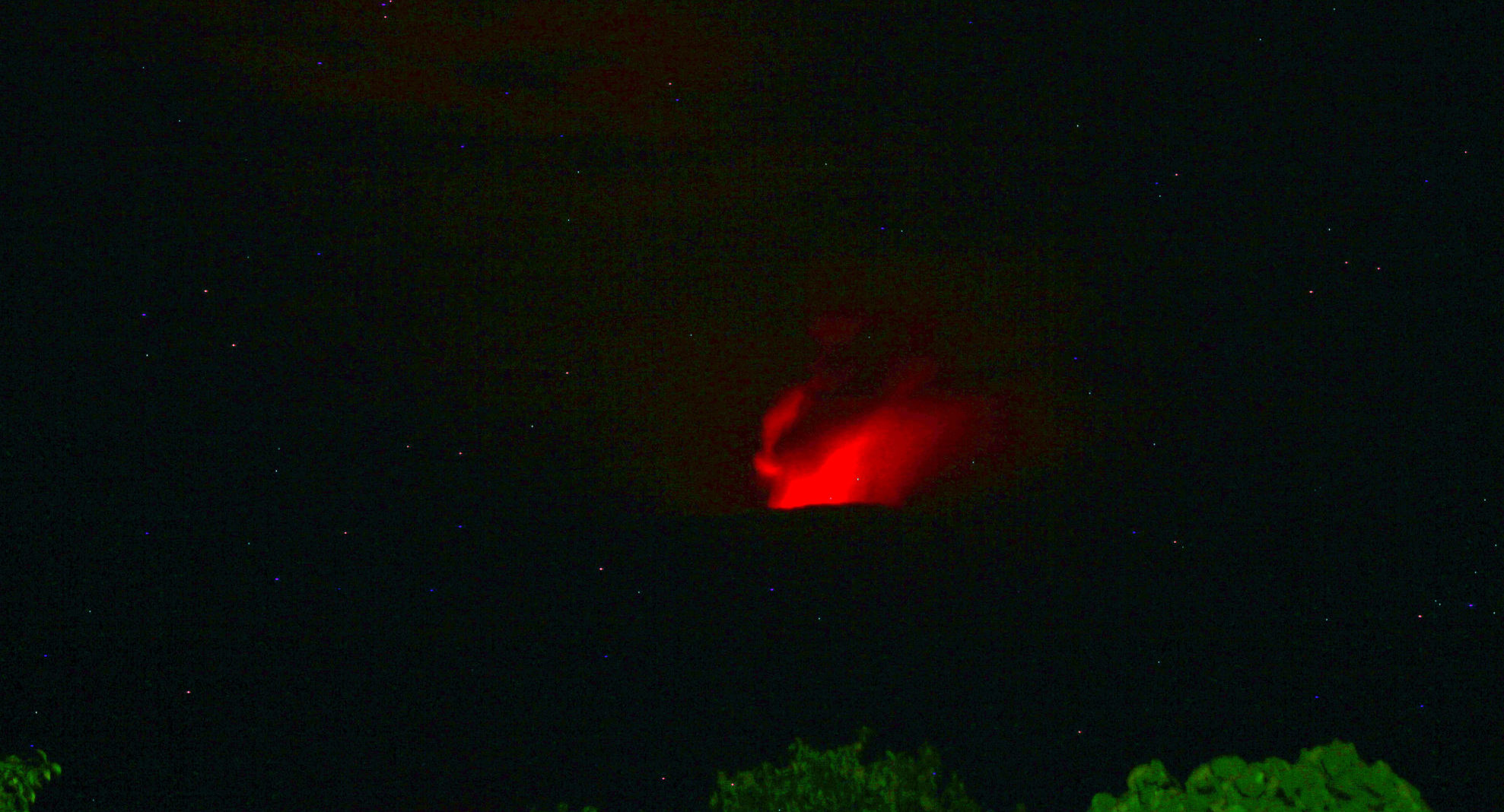
It is mount Nyiragongo, a 3400 metres tall stratovolcano, which we would be climbing tomorrow. But that is a story for another day.
